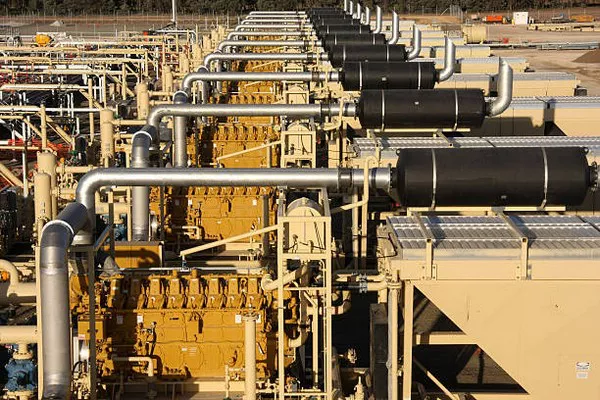Choosing the correct PSI (pounds per square inch) setting for your air compressor is crucial for achieving optimal performance and safety. The PSI setting determines the pressure at which your compressor operates and directly affects the efficiency and effectiveness of your pneumatic tools and equipment. In this guide, we’ll delve into the factors that influence PSI selection, how to determine the ideal PSI for different applications, and key considerations for safe and efficient compressor operation.
Understanding PSI
PSI is a unit of pressure used to measure the force exerted by gas or liquid molecules against a surface area. In the context of air compressors, PSI represents the amount of air pressure generated by the compressor. This pressure is what enables air tools to function effectively, powering tasks ranging from inflating tires to operating heavy-duty machinery.
Factors Influencing PSI Selection
Several factors influence the choice of PSI for your compressor:
Tool Requirements: Different air-powered tools and equipment have specific PSI requirements for optimal performance. Refer to the manufacturer’s recommendations for the correct PSI range for each tool.
Application Type: The type of task you’re performing dictates the necessary air pressure. For instance, low-pressure applications like inflating tires require less PSI compared to high-pressure tasks like sandblasting.
Air Compressor Capacity: The capacity (CFM – cubic feet per minute) of your compressor impacts its ability to sustain a particular PSI level. Larger compressors can deliver higher PSI for longer durations without overheating.
Operating Environment: Consider the temperature and altitude of your work environment. Higher temperatures and altitudes may require adjustments to PSI settings for optimal performance.
Determining the Ideal PSI
To determine the ideal PSI setting for your compressor, follow these steps:
Refer to Tool Specifications: Consult the user manual or specifications for each pneumatic tool to identify its recommended operating PSI range.
Consider Application Requirements: Determine the PSI needed for the most demanding task you’ll be performing. Set your compressor’s PSI slightly higher than the highest requirement to ensure consistent performance.
Factor in Hose Length and Diameter: Longer hoses or smaller hose diameters can reduce the effective PSI at the tool end due to air friction and pressure drop. Adjust PSI settings accordingly for optimal performance.
Test and Adjust: Start with a lower PSI setting and gradually increase it while monitoring tool performance. Avoid exceeding the maximum recommended PSI to prevent damage to tools and equipment.
Common PSI Settings for Different Applications
The ideal PSI setting varies depending on the type of application. Here are typical PSI ranges for common tasks:
Inflating Tires: 30-35 PSI for car tires, higher for larger tires like truck or RV tires.
Air Tools (e.g., nail guns, impact wrenches): 80-120 PSI, depending on the tool and manufacturer’s recommendations.
Paint Spraying: 25-40 PSI for HVLP (high-volume, low-pressure) spray guns; up to 90 PSI for conventional spray guns.
Sandblasting: 90-120 PSI for small-scale projects; higher PSI for industrial sandblasting.
Key Considerations for Compressor PSI Settings
Maintaining the right PSI setting is essential for safety, efficiency, and equipment longevity. Here are important considerations:
Tool Compatibility: Ensure that the compressor’s PSI output matches the requirements of the tools you intend to use. Using incorrect PSI settings can lead to tool malfunction or damage.
Avoid Exceeding Maximum Ratings: Each air tool has a maximum PSI rating specified by the manufacturer. Operating above this limit can cause tool failure or pose safety risks.
Monitor Air Pressure: Use a pressure gauge to regularly monitor the compressor’s output PSI. Adjust settings as needed to maintain consistent pressure levels.
Temperature and Altitude: Be aware that temperature and altitude can affect air density and, consequently, compressor performance. Adjust PSI settings accordingly when working in extreme conditions.
Regular Maintenance: Keep your compressor well-maintained to ensure accurate PSI delivery. Replace worn-out components such as air filters and check valves to prevent pressure drops.
Safety Precautions
Operating an air compressor at the correct PSI is essential for safe operation. Follow these safety guidelines:
Always wear appropriate safety gear, including eye protection and hearing protection.
Regularly inspect hoses and connections for leaks or damage.
Ensure proper ventilation when operating in enclosed spaces to prevent carbon monoxide buildup.
Familiarize yourself with emergency shutdown procedures in case of compressor malfunction or overpressure.
See Also What Is Compressor Displacement? A Comprehensive Guide
Conclusion
Selecting the right PSI setting for your air compressor is vital for achieving optimal performance, efficiency, and safety. By considering tool requirements, application type, and operating conditions, you can determine the ideal PSI for your compressor. Regular maintenance and adherence to safety guidelines will ensure that your compressor operates reliably and safely for years to come.

